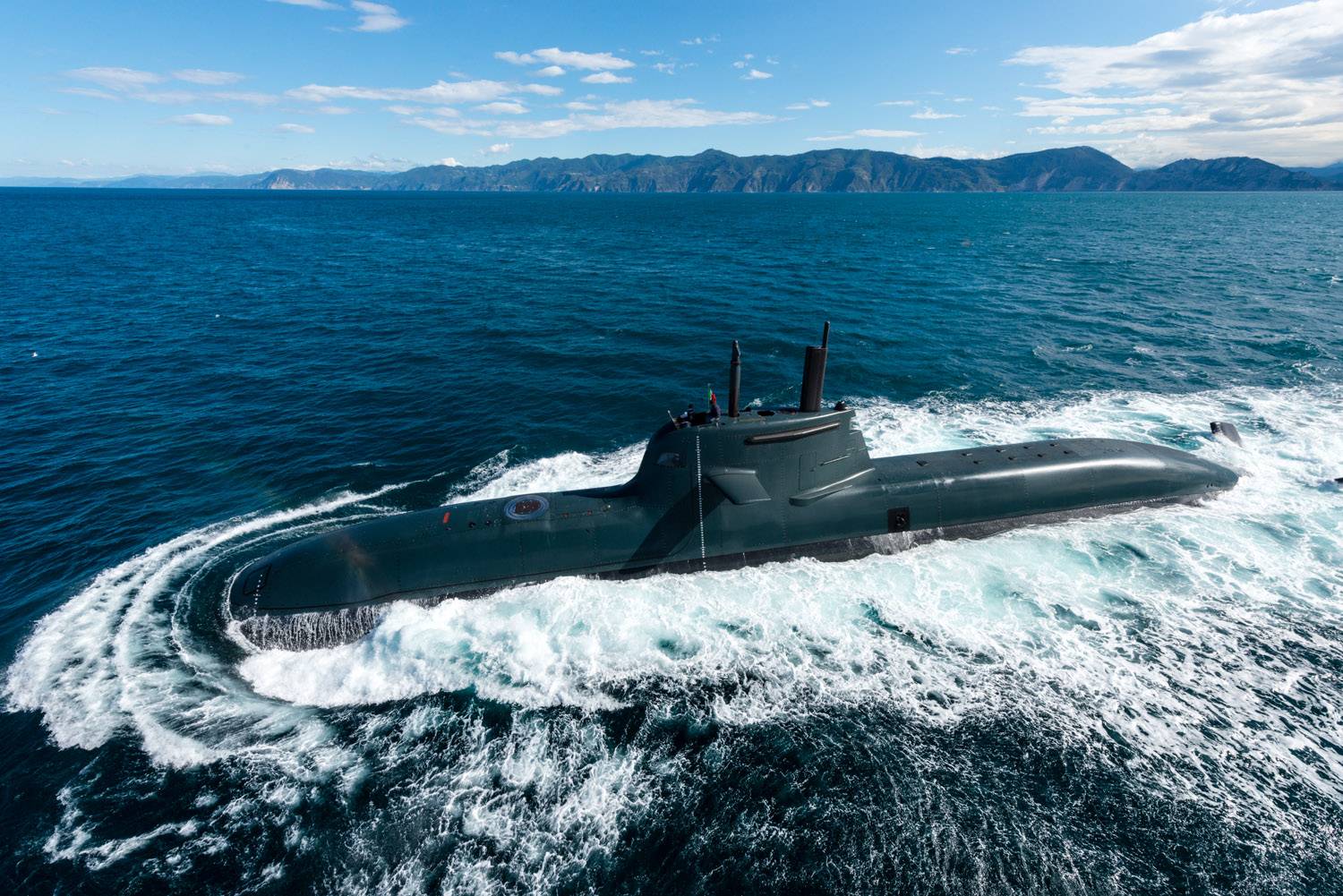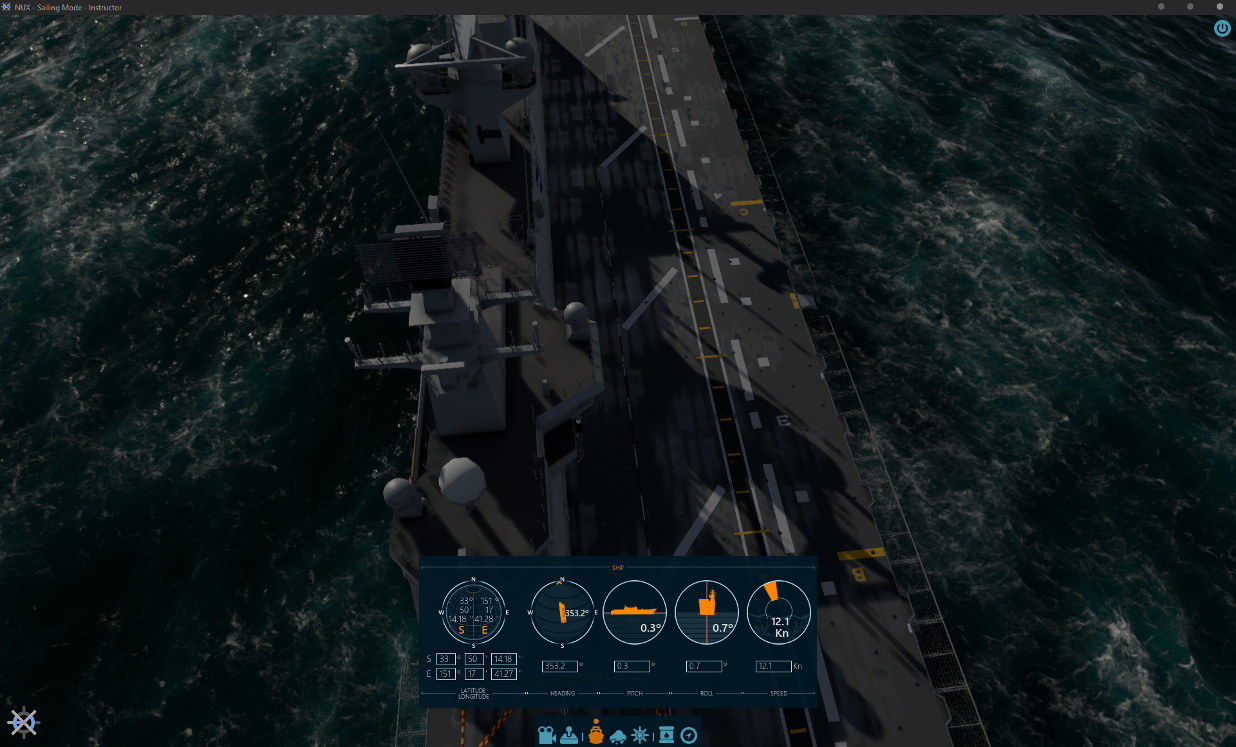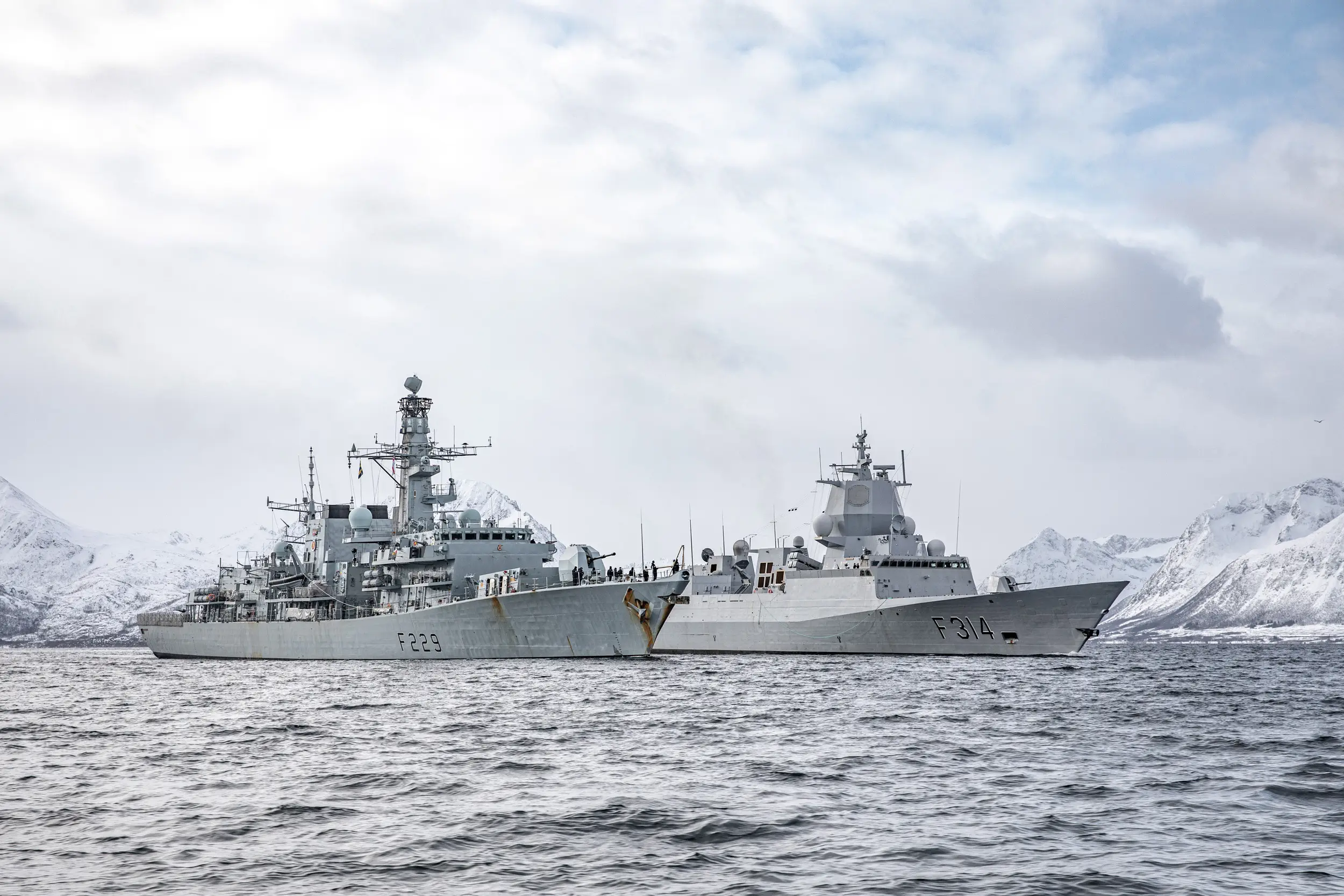
REPORT HOME > LIFE AFTER LAUNCH
MAY 2023 | technology report | NAVAL ENGINEERING
In the second part of the report, Harry Lye examines how digital engineering technologies are improving maritime maintenance for the better and future-proofing vessels to be ready for new equipment fits and training crews how to use them.
Above: Babcock has used digital twin technology to improve the performance of naval gun systems. (Image: Babcock)
Confronted by the rapid pace of technological change in fields such as sensing and shooting, navies are increasingly struggling to keep up with news threats. This is manifesting itself across industry and government, with a demand for ships to be built faster, and a need for maintenance times to be reduced, keeping hulls in the water on operations for longer.
Jon Wines, Lead Solution Architect at Expleo’s marine business unit, told Shephard that increasing the availability of fleets is one of the key challenges facing the naval sector, and a digital twin represents a significant opportunity to improve the effectiveness of maintenance programmes.
Digital technologies are beginning to play a more significant role in supporting naval vessels post-delivery, with solutions such as modular designs, embedded sensors on equipment and a digital twin being deployed to tackle challenges in maintenance and deliver efficiencies.
Shipbuilders and vessel designers from across Europe made it clear to Shephard that they were embedding a digital twin into their processes to support maintenance, training and other aspects of a ship’s in-service life.
Digital twins: context is key
‘The creation and configuration control of a digital twin throughout the life of a vessel provides the opportunity for a step-change in the way in which we operate them,’ Chief Naval Architect at Expleo James Gladman told Shephard.
‘The collation and transmission of near real-time information could enable more effective decision-making. For example, the life of a ship’s structure is normally dominated by cyclic fatigue. But could we use the digital thread to monitor and analyse the effects of that fatigue and increase the life of a vessel?’
Despite the clear benefits, interviewees told Shephard that the implementation of a digital twin had so far been limited due to the expensive upfront costs associated with their deployment and differing commercial arrangements that divide the life cycle of a ship.
It is not uncommon in defence for one company to build a platform, another to be given a contract to support it, and then another to conduct any future significant upgrades, all creating barriers between data.
‘When considering a digital twin on board a vessel, it is vitally important to utilise requirements and benefits management techniques to ensure a clear return on the investment,’ a BMT representative added.
Babcock Marine’s engineering and technology director Neil Young echoed these sentiments, telling Shephard that using a digital twin was important for improving a vessel’s design, availability and performance.
He explained: ‘Newly designed vessels are being delivered fully digitally enabled, through the design and build process to the operational and maintenance life of the vessel, where operating data can be pulled directly from the ship.’
Babcock has already used a digital twin to improve the availability of a naval gun system, improving the processes and outputs from traditional troubleshooting techniques.
Marine experts from BAE Systems said that digital twins had different definitions and use cases in different businesses and sectors, adding that the company saw one of the main benefits as connecting physical and virtual systems to ‘close the circle of in-service learnings’.
In service, BAE’s capabilities are designed to enable the company to have a near-real-time set of ship data and performance figures which informs maintenance planning and therefore has benefits for platform availability.
BAE’s experts detailed two tools they use: System Information Exploitation (SIE), which gathers, stores and processes data on a ship; and Prognostics and Health Management (PHM) algorithms which use machine learning to monitor system and equipment health.
‘This is all available on board for the user as well as allowing for the near-real-time transfer of this data to the shore, enabling us to feed shoreside digital twins,’ BAE’s experts added.
A representative for Fincantieri told Shephard that the digital twin approach would be applied to its future new builds, describing it as a ‘digital thread’ among all the product life cycle phases.
The Italian shipbuilder believes that the use of the technology maximises the end user’s experience and offers a better understanding of the product.
As soon as the physical twin – in this case, the finished ship – is available, Fincantieri said the digital counterpart was used to support decision-making in various areas, from predictive maintenance to safety enhancements and remote assistance.
‘What-if’ analysis, the company said, can be performed on the digital twin and fed back directly to a crew to optimise performance of propulsion, energy and other mission-critical aspects of a ship or submarine.
Above: As soon as a physical vessel is operational, Fincantieri can use a digital twin to support decision-making in areas such as preventive maintenance. (Photo: Fincantieri)
It added that such solutions also offered better training, using augmented reality or virtual reality environments to enhance the proper use of onboard systems and devices, increasing a crew’s knowledge of their ship and making them more confident operators.
Spain’s Navantia echoed Fincantieri’s views on training, saying, ‘virtual and augmented reality (VR/AR) allows immersion in the natural environment in NAVANTIS – the NAVANtia Training Integrated System.
‘Through the use of NAVANTIS and thanks to the digital training, the entire crew can go directly on board from the training centre and navigate safely.’
French shipbuilder Naval Group also told Shephard that the digital twin was an interesting solution for controlling the configuration management of ships over time.
With a robust digital model, much of the design work that goes into upgrading a platform can be done on shore, meaning a vessel does not necessarily need to be in port for engineers to inspect it before planning commences.
Saab Kockums’ Magnus Olsson, head of surface ship design and engineering, explained: ‘Take an example from the Swedish Navy; we have few vessels in each area. There can be one or two ships in each ship class.
‘To be able to perform upgrades, updates, modifications, you can do more of the design work without having the vessel in harbour. That is when you have a good digital twin of the vessel.’
Expleo’s Marine VP Jonathan Taylor explained that the biggest value of digital tools is connecting data into a ‘single source of truth’. Therefore maintenance and configuration control of the digital asset are as important as the physical asset.
In this vein, a spokesperson for Navantia told Shephard: ‘A ship’s digital twin, such as the one that will be on board the future [Spanish Navy] F110 class frigate, is the key to safe and optimised operation and sustainment throughout the ship’s life.’
Above: Navantia uses augmented and virtual reality to ensure its training systems replicate the real vessel as closely as possible. (Image: Navantia)
Navantia is using a digital twin to enable ‘smart sustainment’. Like the other examples, this employs machine learning and information gathering to extract insights from operational data collection to support decision-making and offer diagnostic and predictive maintenance.
The spokesperson for the Spanish shipbuilder added: ‘Digital continuous monitoring of all systems, including [a vessel’s] structure, allows the early detection and prediction of maintenance needs, reducing failures and improving the ship’s safety.
‘Digital twinning is reshaping the lifetime of vessels by improving reliability, safety and efficiency, reducing maintenance costs, and extending the life of the ship’s systems and equipment.’
With the importance of a digital twin now clear, this opens up some interesting possibilities for maintenance procedures.
Holistic maintenance: scanners, printers and sensors
Olsson said: ‘The next step is also in maintenance, training, etc, and how it can be used by the crew. We are then into how to implement the 3D model into the ILS [integrated logistics support] documentation as well.’
The Saab expert said that a good 3D model and database of the vessel, combined with 3D printing, can allow navies to produce spare parts on board, speeding up maintenance processes significantly.
By allowing crews to produce parts while under way, 3D printing in conjunction with a digital twin offers potential cost reductions and ensures operational availability in several ways. By not having to go into port or fly out replacements, navies can fix issues on the water – within reason.
This could also offer exciting benefits in a task force scenario in which a larger ship, such as an aircraft carrier with abundant space, could, in theory, be used as a floating factory to replenish its escorts with self-produced parts.
3D printing is increasingly being used across the naval supply chain, from the fabrication of components used to build ships to experiments with deployable systems on board vessels for the purposes described above. For example, liquid metal printers have already been deployed on US Navy ships.
Young said: ‘We [Babcock] are applying additive manufacturing to address the issue of obsolete parts, which can no longer be sourced through the supply chain.
‘This involves scanning the part and making a 3D model of it, engineering checks to confirm it is safe for the design intent and then having it additively printed and delivered to the platform.’
This is a specific example of the benefits of digital technologies when supporting older vessels.
With naval programmes often facing delays or nations with less funding having to keep ageing platforms in operation for longer, 3D printing, laser scanning and digital modelling could pay dividends.
Young added: ‘In the maintenance area, we are using laser scanning to quickly scan ships and submarines to produce a known material state, and then produce quicker design solutions and a fit first-time solution. We can do this using hand scanners, via drones in the air or ROVs in the water.
‘We have also produced a holistic maintenance solution, which can take real-time or buffered data from an asset and work out what maintenance needs to be completed (and by inference what maintenance does not need to be done).
‘This provides a risk-based predictive maintenance capability instead of a checklist approach as traditionally seen.’
Olsson noted that Saab also employed laser scanning to support older ship types.
Moving beyond predictive maintenance, Expleo sees the digital twin as being the key enabler for improved availability, with systems usage data and critical parameters being captured in near-real time.
This allows asset-specific analysis and simulation to be conducted for the purpose of optimising operations and maintenance planning directly based on the data.
By knowing what has happened, the company believes a more tailored maintenance schedule can be developed to provide further efficiencies.
This approach also extends into future maintenance periods but furthermore offers navies insights into how their platforms perform in different conditions.
Above: Data can help understand how components and subsystems perform in different climatic conditions, from the Arctic to the tropics. (Photo: UK MoD/Crown Copyright)
For example, in the Royal Navy, it is not uncommon for two ships of the same class to be operating concurrently in two very different climates. By collecting data on the performance of subsystems, navies will be able to generate an understanding of how conditions affect parts and then tailor their deployment schedules with that knowledge in mind.
So a component may have wildly differing operational limits in the freezing cold of the Arctic than it would in the sweltering heat of the Gulf or humidity of the tropics. This could become increasingly beneficial as European navies, in particular, seek to operate more frequently in the Indo-Pacific.
Sensors can also be deployed across the supply chain to track vendors, which information can then be fed into digital tools to understand better how equipment flows from factory to ship.
Fincantieri cited the use of RFID tags to track how components move through a plant, how long they stay in a warehouse, when they are placed on board a vessel, and then hold information about when a part needs replacing.
The Royal Navy has also conducted an Internet-of-Things tracking trial at HMNB Devonport with Smarter Technologies to keep tabs on mission-critical government-furnished equipment.
The UK MoD used the trial to see how technology could be used to improve efficiency at large naval bases. While this may seem tangential to maintenance, support and availability, the exercise significantly reduced the time to find specific objects.
Using digital technologies to make onshore facilities more efficient could have more knock-on benefits. In an availability scenario, every little helps, reducing the time it takes to ready a ship for a deployment or cycle through a maintenance period.
Designing for upgrades: modules and power
Digital tools and modelling also allow shipbuilders and designers to keep one eye on the future when developing platform designs.
Fincantieri explained: ‘Now we can try and define what is product innovation for a shipbuilder: it is the ability to deliver an innovative platform able to grow during time with a plug-and-play, and not plug-and-pray, approach all along the life cycle.
‘While we might not know the exact specifications for future combat systems, we must design ships with margins in known areas, like electrical power, for example. Rarely do technological advances in weapons and sensors require less energy to operate and maintain.’
In a more concrete example of how vessel design is changing to support modernisation and through-life support, Denmark is at the forefront with SH Defence’s The Cube and a new company Cubedin, designing interfaces to support modular shipbuilding.
The Cube containerises capabilities for various naval missions, allowing navies to interchange them when required quickly and builds on the STANFLEX concept.
This could also allow forces to potentially keep up with technological change more efficiently, as the capability of a ship is not tied to mid-life upgrades or lengthy overhaul procedures.
Cubedin offers physical and software solutions for plug-and-play modules, allowing navies to quickly re-role ships at a national, task group or alliance level.
However, these approaches are not without challenges, as many naval missions can be exceptionally specialist. Re-roling vessels will also require a multi-skilled crew or the rotation of sailors between platforms depending on the task assigned.



